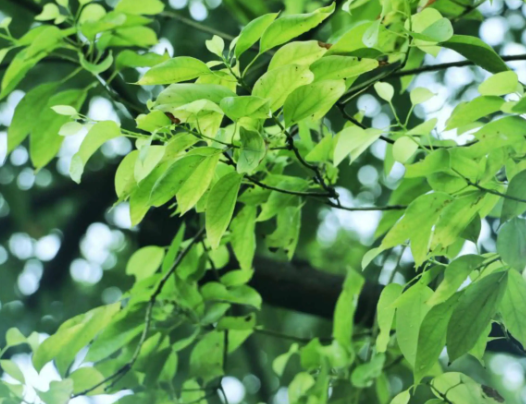
Camphor (Cinnamomum camphora) generally refers to camphor (Cinnamomum camphora) and (scientific name: Cinnamomum camphora (L.) Presl) is a large evergreen tree of Lauraceae and Cinnamomum, with a broad oval crown; The branches, leaves and wood have camphor smell; The bark is yellowish brown, with irregular longitudinal cracks. The terminal bud is broadly ovate or orbicular, and the scales are broadly ovate or nearly circular, and the outside is slightly covered with silky hairs. Branches cylindrical, light brown, glabrous. Leaves alternate, ovate elliptic, panicles axillary, pedunculate, glabrous or grayish white to yellowish brown puberulent with each order axis, and the hairs are often more obvious on nodes. Flowers green white or yellowish, fruit ovoid or subglobose, 6-8 mm in diameter, purple black.
Growth habit:
Camphor grows well in the environment of sufficient light, warm and humid climate, and has poor tolerance to cold. Camphor has no strict requirements on soil, and it grows best in the soil with slightly acidic pH value. It has certain resistance to waterlogging, and it does not grow well in the dry environment.
Curing method:
From May to June, the growth of Cinnamomum camphora is vigorous. Compound fertilizer, potassium dihydrogen phosphate and other quick acting fertilizers should be applied in combination with the soil fertility level to provide sufficient nutrients for its rapid growth. After the seedlings are transplanted, the resistance to cold is not strong. Appropriate heat preservation measures should be taken, such as wrapping the branches and trunk of camphor with straw and other covering materials in winter. Remember that plastic film is not breathable and the water vapor is not easy to be released and removed, which may cause the trunk to be soaked and rotten. Plastic film cannot be selected.




